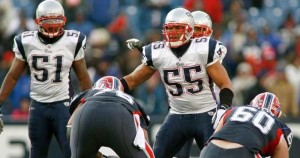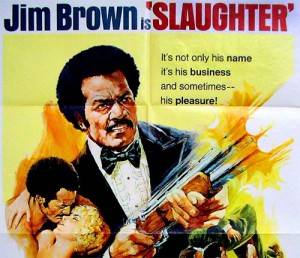Waiting For The Weekend: Did You Say Playoffs?

Justin Verlander and the Detroit Tigers are are looking to complete the 2009 playoff picture.
The first few weeks of October are always great sports weeks as between the Major League Baseball playoffs, college and pro football, the NASCAR Chase and the starts of hockey and basketball seasons there is more than enough to keep every sports nut happy.
Did You Say Playoffs?
While we have known most of the teams participating in the playoffs for several weeks. The Minnesota Twins and Detroit Tigers have kept things interesting in the AL Central.
Even if Minnesota doesn’t make the playoffs, they should get credit for doing more with less than any other team in baseball. Now that the Oakland A’s have hit the skids the last couple years, the Twins have emerged as the most consistent contender among the teams generally seen as the “have-nots” in baseball.
Remember at the start of this decade when the buzzword was contraction and many thought the Twins should go?
With their new park scheduled to open next year, look for the Twins to remain competitive. Of course, a new stadium doesn’t necessarily guarantee that you will be competitive on the field (just ask fans of the Pirates and Reds), but for a management team that is among the best in the league, the potential of having more resources could make them really dangerous.
As for the teams that will definitely be in the playoffs, I think it says something about the lack of competitive balance in baseball that the Angels, Yankees and Red Sox are all back in the playoffs once again.

This marks the fourth time this decade that the “big three” have occupied three of the four American League slots. Overall, they have combined for 21 of the 40 playoff slots available to the American League since 2000.
The other 19 slots have rotated between just seven teams with Oakland (5) and Minnesota (4) making the most trips. Cleveland, Seattle, Chicago and Detroit (assuming they hold on) have each made two and the Devil Rays one.
I have written before about how baseball needs to fix the problem of competitive balance in the game, but unfortunately, the “powers that be” are more than pleased to have the major television markets of Los Angeles, New York and Boston regularly represented in the playoffs.
While the rest of us may have liked having something different with Tampa Bay in the playoffs and World Series last year, the folks at TBS and Fox will be much happier this year with the likelihood that one of their three major cities will be in the series.
Of course, that means I’m rooting for the Tigers. And, just to throw salt on the wound, I hope they end up playing the Rockies.
Hard To Say Goodbye

Junior Seau is hoping the Patriots will call again this fall as they did a year ago when he played in four late season games.
I saw a story this morning that Junior Seau is still interested in playing in the NFL again and hopes Bill Belichick will call him again now that the New England Patriots have suffered some injuries at linebacker.
It sure seems like Seau has retired more times than Brett Favre. Yet every year he ends up back on the field at some point. Last year he played four games for the Patriots late in the season.
He is currently appearing on the television show “Sports Jobs”, but would be much happier if he could return to his old one.
Much has been written about how professional athletes, especially Hall of Fame caliber players like Seau and Favre, need to know when it is time to quit and ride off gracefully into the sunset.
However, given the competitive drive that made these guys stand out above the rest, it is hard to ask them to suddenly turn that off just because they have reached a certain age.
Sports is just about the only profession that I know of where you are at your peak in your early to mid 20s and then tossed out like yesterday’s garbage by the time you get to your middle to late 30s.
In all other businesses, kids in their 20s are still sitting in cubicles and getting coffee waiting for a chance to show their stuff. It typically isn’t until you reach your 30s and 40s that opportunities for top management positions and higher salaries appear.
In sports it is the exact opposite, which makes it hard for many greats to say goodbye.
It also makes it all the more peculiar when someone with the same kind of athletic greatness as Favre and Seau walks away so early and never looks back.
I was working yesterday on my Classic Rewind for this week. The game I selected was the 1997 meeting between the Packers and Vikings where Favre threw five touchdown passes.
Also starring in that game was Robert Smith as a running back for the Vikings. He gained 132 yards and scored a touchdown.
In 2000, at 28-years of age and the height of his career, Smith spurned the opportunity for a lucrative contract and retired to pursue a career in medicine. He has since become a semi-regular face at ESPN as a football analyst.
Smith was a great NFL running back (6,818 career yards, 1,512 in his final season) and had he played another 4-5 years may have earned a spot in the Hall of Fame. But, unlike Favre, Seau and some others who played until they had to tear the uniform off them, Smith always saw football as a means to an end and not as his final calling. He had done all he felt he could do in football and left before he endured any permanent physical injuries.
Of course, another example of a player with amazing ability that just walked away was Barry Sanders. My colleague Joe Gill wrote a great piece about Sanders a couple weeks ago that reminds us of his greatness.

After his NFL career, Jim Brown appeared in a number of movies. Some were better than others.
Many long-time fans will also recall that Jim Brown left the NFL at the peak of his career, but I think his situation was a little different.
Brown played before NFL players were making life-changing money and recognized that in the long run he could probably make more money as an actor than as a football player. He ended up having a B movie career, but because he left football while still at his top form is always remembered for his greatness and not for being carted off the field after taking one too many hits.
Though not a football player, today (October 2) marks the 29th anniversary of the day Muhammad Ali took a horrific beating for 11 rounds from Larry Holmes.
While Ali had so many fights that it is hard to say that one specific fight triggered the condition that he has struggled with for the last 20 years, most who know Ali say that he was never quite the same after that fight.
Ali couldn’t quit and evidently neither can Seau. Let’s just hope that if Seau does come back that he eventually is still physically able to walk away.
Birthdays
Each week we look at some current and former athletes who were born during the week.
Here are some notable sports figures born during this week:
October 2 – Maury Wills (1932), Aaron McKie (1972)
October 3 – Dave Winfield (1951), Dennis Eckersley (1954)
October 4 – Sam Huff (1934), AC Green (1963), Kurt Thomas (1972)
October 5 – Bill Willis (1921), Barry Switzer (1937), Trace Armstrong (1965), Rex Chapman (1967), Grant Hill (1972)
October 6 – Helen Wills Moody (1905), Dennis “Oil Can” Boyd (1959), Albert Lewis (1960), Ruben Sierra (1965)
October 7 – Vaughn Hebron (1970), Johnnie Morton (1971)
October 8 – Bill Hewitt (1909), Danny Murtaugh (1917), Tony Eason (1959), Matt Biondi (1965), Rashaan Salaam (1974)